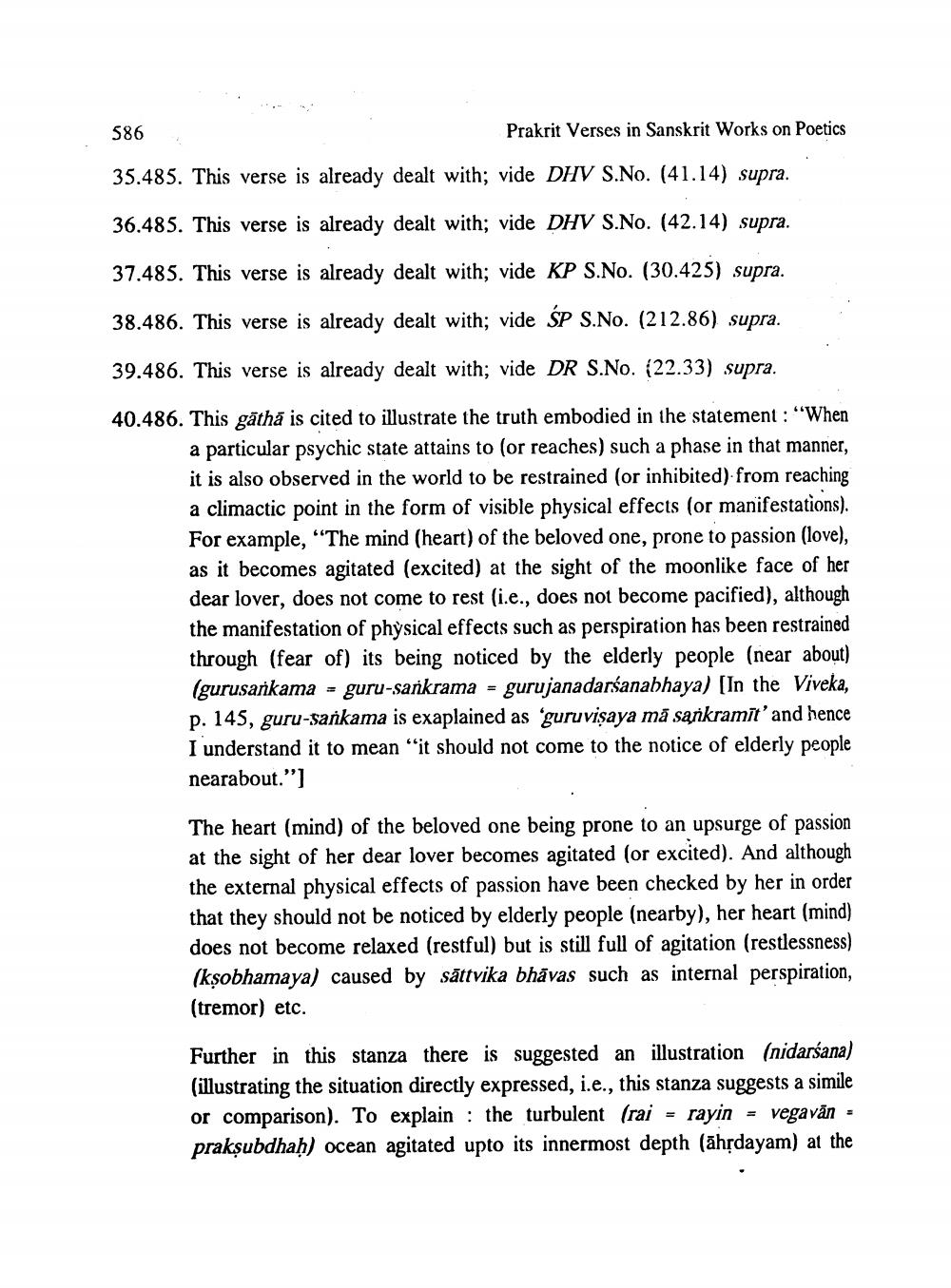________________
586
Prakrit Verses in Sanskrit Works on Poetics 35.485. This verse is already dealt with; vide DHV S.No. (41.14) supra. 36.485. This verse is already dealt with; vide DHV S.No. (42.14) supra. 37.485. This verse is already dealt with; vide KP S.No. (30.425) supra. 38.486. This verse is already dealt with; vide ŚP S.No. (212.86) supra. 39.486. This verse is already dealt with; vide DR S.No. (22.33) supra.
40.486. This gātha is cited to illustrate the truth embodied in the statement : "When
a particular psychic state attains to (or reaches) such a phase in that manner, it is also observed in the world to be restrained (or inhibited) from reaching a climactic point in the form of visible physical effects (or manifestations). For example, "The mind (heart) of the beloved one, prone to passion (love), as it becomes agitated (excited) at the sight of the moonlike face of her dear lover, does not come to rest (i.e., does not become pacified), although the manifestation of physical effects such as perspiration has been restrained through (fear of) its being noticed by the elderly people (near about) (gurusarkama = guru-sarikrama = gurujanadarśanabhaya) [In the Viveka, p. 145, guru-sankama is exaplained as 'guruvişaya mā sąjkramit' and hence I understand it to mean "it should not come to the notice of elderly people nearabout."]
The heart (mind) of the beloved one being prone to an upsurge of passion at the sight of her dear lover becomes agitated (or excited). And although the external physical effects of passion have been checked by her in order that they should not be noticed by elderly people (nearby), her heart (mind) does not become relaxed (restful) but is still full of agitation (restlessness) (ksobhamaya) caused by sāttvika bhāvas such as internal perspiration, (tremor) etc.
Further in this stanza there is suggested an illustration (nidarśana) (illustrating the situation directly expressed, i.e., this stanza suggests a simile or comparison). To explain : the turbulent (rai = rayin = vegavan - praksubdhah) ocean agitated upto its innermost depth (āhrdayam) at the




